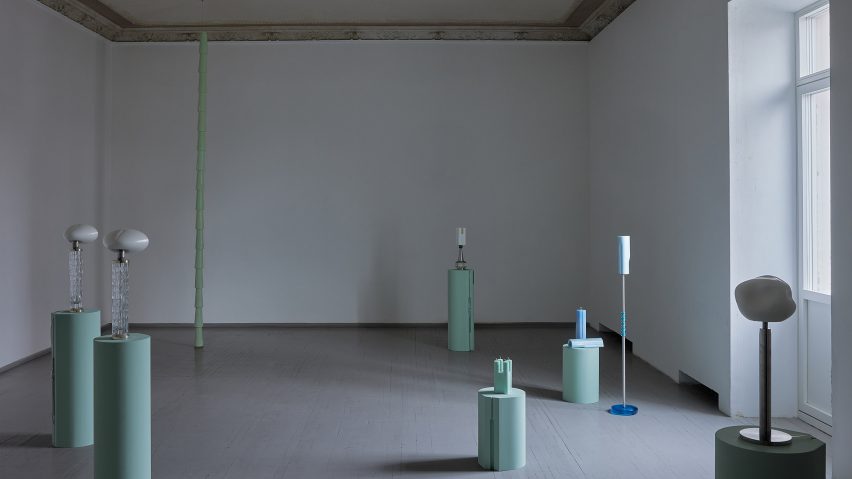Copenhagen design duo Daydreaming Objects has developed a series of lights that combine reclaimed vintage lamp bases with "renewable and transformative" shades made from natural wax.
Lighting designer Ruta Palionyte and architect Ieva Baranauskaite, who work together as Daydreaming Objects, created the Soft Solids collection to highlight wax's inherent renewability and light-diffusing properties.
The self-initiated project aimed to identify a material that would complement various salvaged luminaires the designers had collected, which mostly date from the 1960s and 70s.
They settled on a blend of soy wax and stearin – a more sustainable alternative to petroleum-based paraffin, which derived from vegetable or animal fats. The combination of materials gives the shades the required resistance, strength and colour of light.
"Wax was chosen for its renewable and transformative properties, as well as its ability to delicately diffuse light," Palionyte told Dezeen.
"The collection was inspired by the organic nature of wax and its capacity to transform from a shapeless mass into a tangible form, reverting to a flexible or even fluid state."
The designers developed shades specifically for each lamp base, using computer software and 3D-printing technology to create prototypes and silicone negatives for casting the molten wax.
The forms were influenced by the processes of growth and regeneration that occur in nature, while the off-white, soft blue and green hues chosen for the lampshades were chosen to evoke natural landscapes.
"Since wax is an organic substance, we've chosen biomorphic shapes to embody this organic quality, while also ensuring they are in dialogue with the characteristics of the vintage pieces," Palionyte said.
The use of silicone moulds allows the Soft Solids products to be accurately recreated over and over again.
Perhaps the most dramatic piece, called Stem, is an overlong pendant light that connects tapered modules into a totem-like form. Light sources in each unit create a chain of light that can be configured to suit different spaces.
The designers chose to use LED light sources with low heat emission to prevent any distortions to the wax forms. The shades also feature voids around the bulbs to facilitate airflow and ventilation.
Ruta Palionyte and Ieva Baranauskaite are both from Lithuania and run their individual creative practices in Copenhagen alongside collaborating as Daydreaming Objects.
Soft Solids was launched as part of an exhibition at Galerija Vartai in Vilnius and will be showcased in Copenhagen this June during the 3 Days of Design festival.
Another designer to have utilised the transformative abilities of wax is Katharina Gross, who dipped brass boxes into molten wax to create a series of tables with stalactite-like legs.
Elsewhere, wax is more commonly used to make moulds as in the pockmarked Drought chair by We+ and Apiwat Chitapany's Ink collection, which was designed to resemble Chinese ink paintings.
The photography is by Norbert Tukaj.

